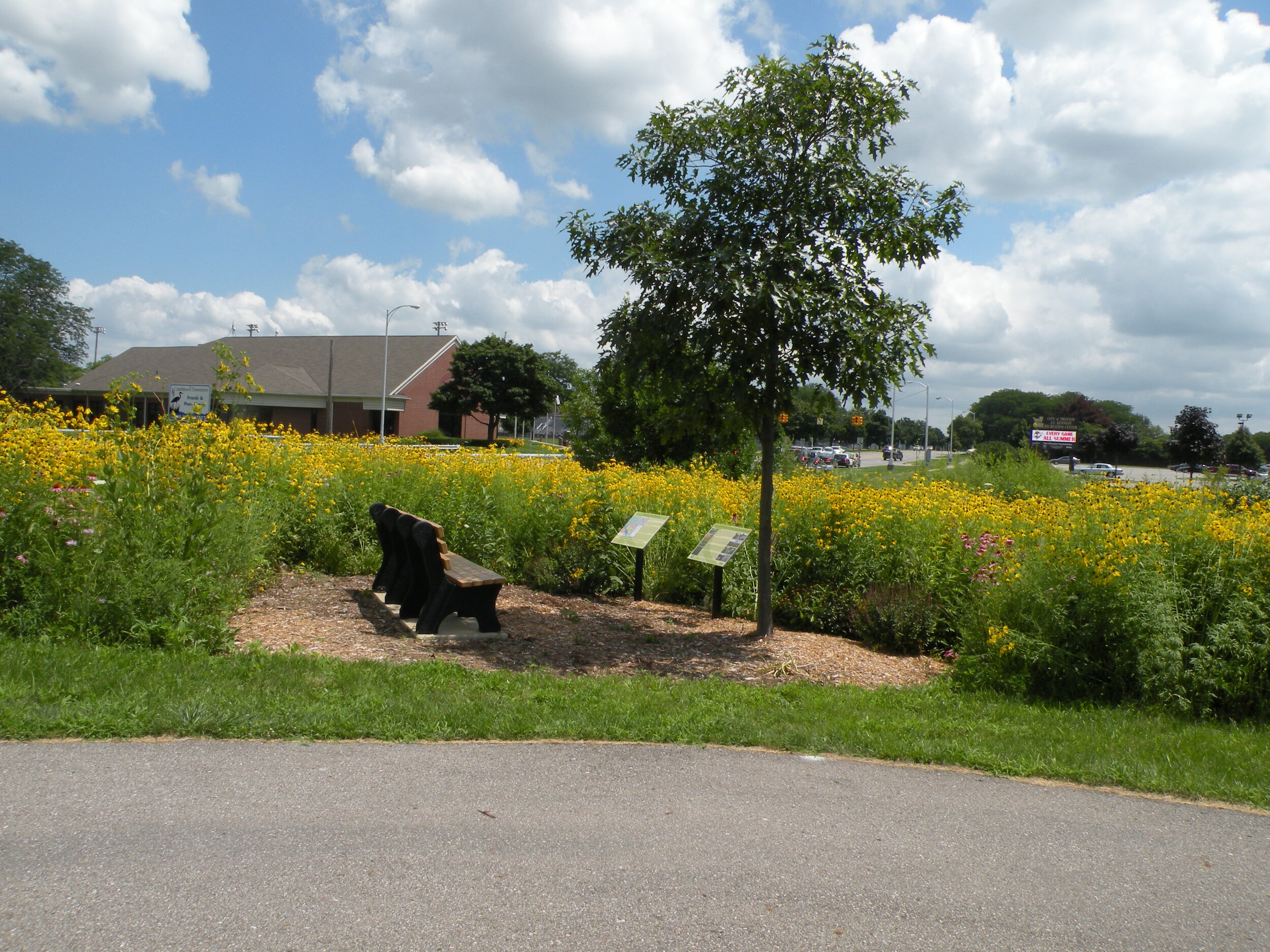Frank and Poet Creek Stream Bed, Bank and Shoreline Restoration Project
Funded by: National Fish and Wildlife Foundation
Project Budget: $40,000
Start Date: May 2007
End Date: October 2008
The Frank and Poet Creek site running through the City of Trenton, like most creeks in the area, acts as a main conveyance of stormwater from the surrounding watershed to the Detroit River. Highly impacted from flashy flows and loss of habitat, this project was designed to stabilize the creek's banks, improve habitat, reduce localized stormwater runoff and provide educational opportunities for area students..
The Frank and Poet Creek, which runs through the Combined Downriver Watershed in Southeast Michigan and empties into the Detroit River, is a highly impacted urban creek system. Its banks are highly eroded from frequent flashy flows from stormwater runoff and in many public areas are mowed to the creek's edge. This greatly diminishes the habitat potential of the once large floodplain that existed along this creek. The Frank and Poet Stream Bank Restoration Project was developed to not only improve this section of the creek's habitat, but also to provide a learning opportunity during the construction phase and into the future.
In the spring of 2007, the Friends of the Detroit River (FDR) received notification that a proposal submitted to do a stream bank restoration project had been approved. The grant was awarded by the National Fish and Wildlife Foundation and was used to complete a 1200 foot restoration project on the Frank and Poet Creek in the City of Trenton. The site is located just south of the West Road Bridge in the parkland that passes just behind the Kennedy Recreation Center. This project was the first "hands on" construction project to be undertaken by FDR.
The goal of this project was twofold. First, much of the natural wetland and floodplain areas along our creeks and rivers, which once helped to control flooding and absorb excessive rain waters, have been lost to development. Today, much of our area's stormwater is no longer absorbed into the ground, but falls on hardened surfaces such as driveways, roofs, and parking lots, and flows directly into our creeks via storm drain pipes. When it rains, this huge instantaneous influx of water causes "flashy flows" that rapidly rise to erode the creek's banks, and this negatively impacts the creek's aquatic habitats. By planting native upland prairie grasses and shoreline vegetation with long roots to stabilize the shoreline, much of this damage can be minimized.
The second goal of this project was to create a demonstration site where high school students and volunteers could learn different techniques used in stream bank restoration. Along with the lessons learned during the construction of the project, a series of educational signs were installed at the site that visitors can read to learn about this project and what they can do to reduce their own stormwater footprint in their own neighborhoods. Local students also participated in a "Bug Hunt" with the help of Wayne County personnel.
Over the course of the two year project, over a dozen different work events were held and several hundred volunteers came together, with the help of the City of Trenton, to plant over two dozen maple and oak trees, over five hundred plant plugs, 40 shrubs in over 4 acres of wetland and upland prairie on both sides of the creek. In addition to the grant funding provided by the National Fish and Wildlife Foundation, the following groups and organizations also provided support for this project: the City of Trenton, DTE Energy Foundation, Wayne County, the Stream Team, J F New Co., Downriver CAER Council and Nativescape LLC.
Project Update: Since the completion of this project, FDR continues to monitor this site. Each year a "Bug Hunt" is held with students from the nearby high school. Their efforts are overseen by Wayne County personnel who gather and help identify aquatic organisms. These "Bugs" are used as indicators to determine the quality of the habitat and water at this location. Several years of monitoring have shown that this project has had a positive impact on this section of the creek.






















